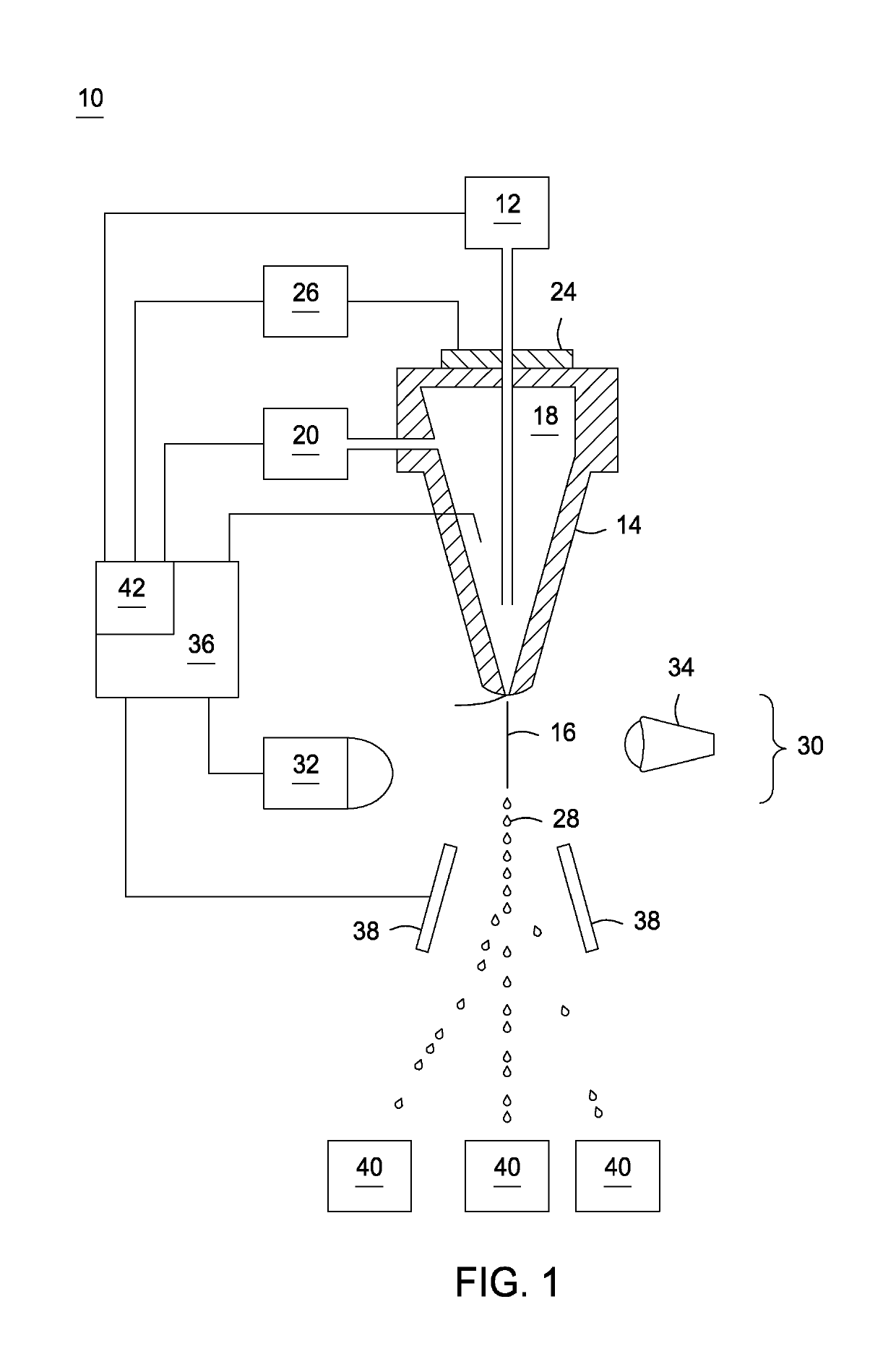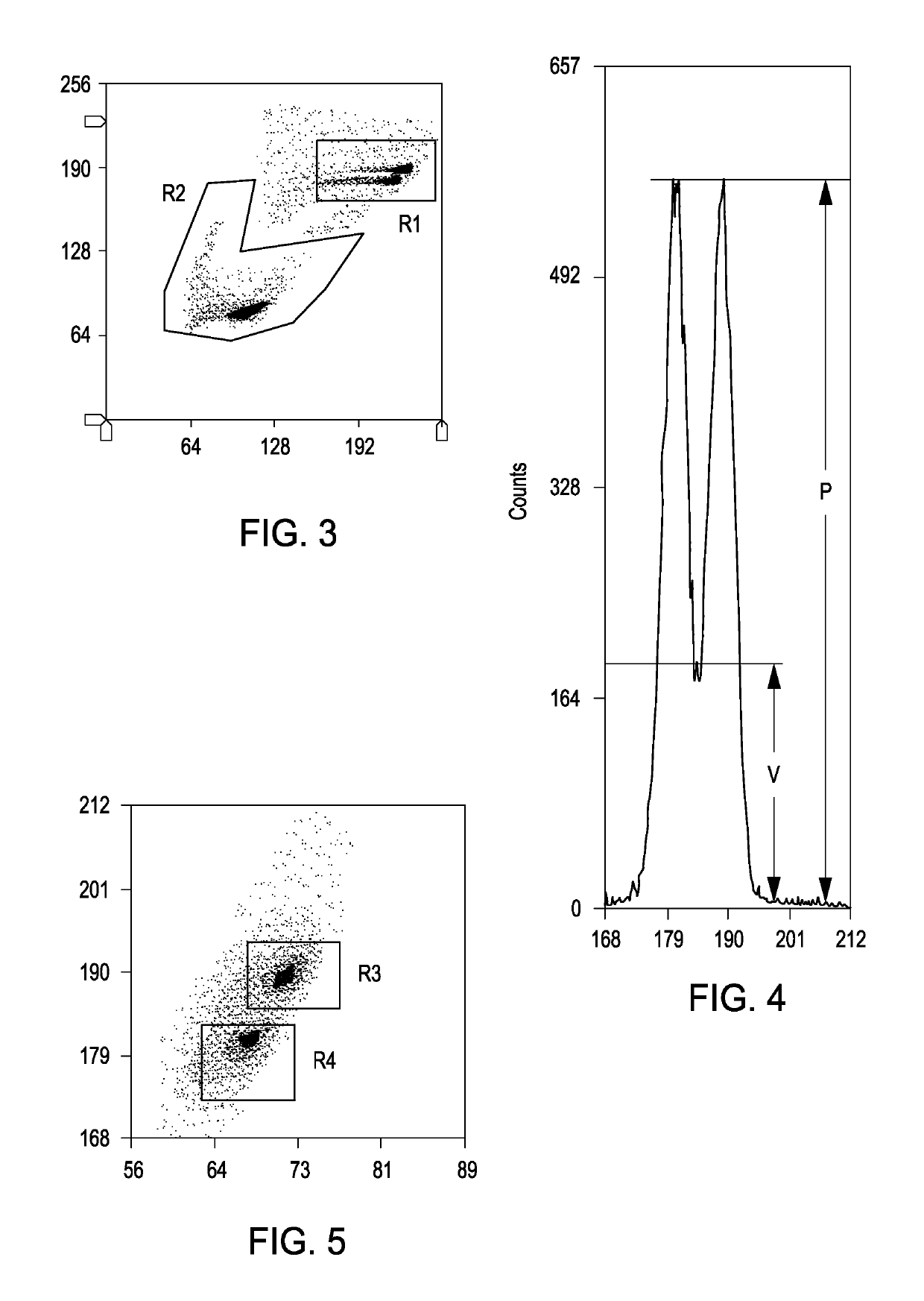High efficiency methods of sex sorting sperm
a sperm and high efficiency technology, applied in the field of cell sorting methods, can solve the problems of compromising sperm membranes, small differences that are difficult to ascertain, and contribute to sperm damage, so as to achieve efficient sorting, minimum productivity, and minimum purity
- Summary
- Abstract
- Description
- Claims
- Application Information
AI Technical Summary
Benefits of technology
Problems solved by technology
Method used
Image
Examples
example 1
zing Sperm Samples and One Step Staining
Collection—
[0092]Sperm was collected from five different bulls on a routine collection schedule using an artificial vagina. Each bull was collected two or three times in one day. Of the five bulls, two were Jersey bulls and three were Holstein bulls. All ejaculates contained greater than 60% progressive motility and sperm concentration varied from 857 million sperm per mL to 2480 million sperm per mL. Ejaculates collected from the same bull were pooled then divided into nine sperm samples for collection and staining treatments.
Portions of each bull ejaculate were stained with nine different methods.
(A) Control (no standardization, two step staining)—A control was established which did not include the step of standardizing collected ejaculates and in which the sperm was stained in two steps. Prior to staining, the sperm samples were concentrated to between 1700 million sperm per mL and 1800 million sperm per mL by centrifugation or by ...
example 2
zing Sperm Samples and One Step Staining
Collection—
[0096]Sperm was collected from six different Jersey bulls on a routine collection schedule using an artificial vagina. All ejaculates contained greater than 65% progressive motility and sperm concentration varied from 765 million sperm per mL to 1710 million sperm per mL. Each Sperm sample was divided into two parts in 15 mL tubes for two collection and staining treatments. pH measurements were taken at collection, and at each subsequent processing step.
Staining—
Control (no standardization, two step staining)—A control was established which did not include the step of standardizing collected ejaculates and in which the sperm was stained in two steps. Prior to staining, the sperm samples were concentrated to between 1700 million sperm per mL and 1800 million sperm per mL by centrifugation or by the addition of a tris-egg yolk buffer having a pH of 6.8, depending on the samples starting concentration.
Sperm in the control group was dil...
example 3
zing Sperm Samples and One Step Staining Reduces Dead Sperm
Collection—
Sperm was collected from three different Jersey bulls and three different Holstein bulls on a routine collection schedule for a total of 17 collections. Each ejaculate was divided for two treatments.
Staining—
[0099]Control (no standardization, two step staining)—A control was established which did not include the step of standardizing collected ejaculates and in which the sperm was stained in two steps. Sperm in the control group was diluted to 160×106 sperm per ml in a modified TALP buffer, as described in Table 1, at a pH of 7.4. Each sperm sample in the control group was then incubated with 16-17 μM of Hoechst 33342 per ml (64-68 μM) of sample for 45 minutes at 34° C. After incubation, an equal volume of a second modified TALP was added reducing the concentration to 80×106 sperm per mL. The second modified TALP includes the components described in Table 1 with the addition of 4% egg yolk, 50 μM red food dye No. ...
PUM
| Property | Measurement | Unit |
|---|---|---|
| UV wavelength | aaaaa | aaaaa |
| pH | aaaaa | aaaaa |
| pH | aaaaa | aaaaa |
Abstract
Description
Claims
Application Information
 Login to View More
Login to View More - R&D
- Intellectual Property
- Life Sciences
- Materials
- Tech Scout
- Unparalleled Data Quality
- Higher Quality Content
- 60% Fewer Hallucinations
Browse by: Latest US Patents, China's latest patents, Technical Efficacy Thesaurus, Application Domain, Technology Topic, Popular Technical Reports.
© 2025 PatSnap. All rights reserved.Legal|Privacy policy|Modern Slavery Act Transparency Statement|Sitemap|About US| Contact US: help@patsnap.com



